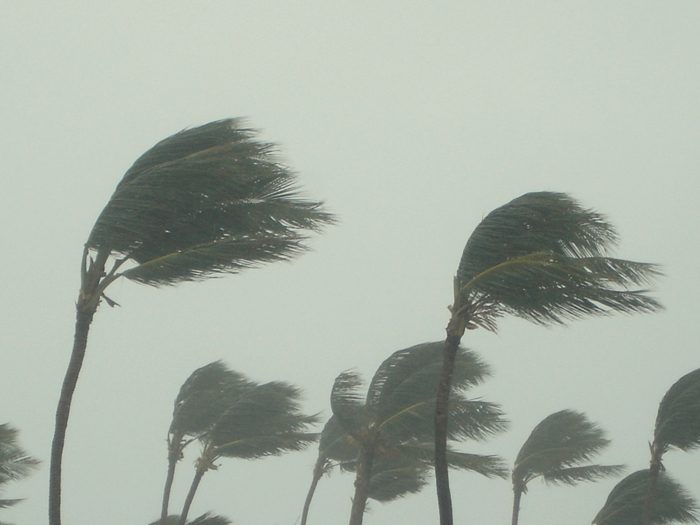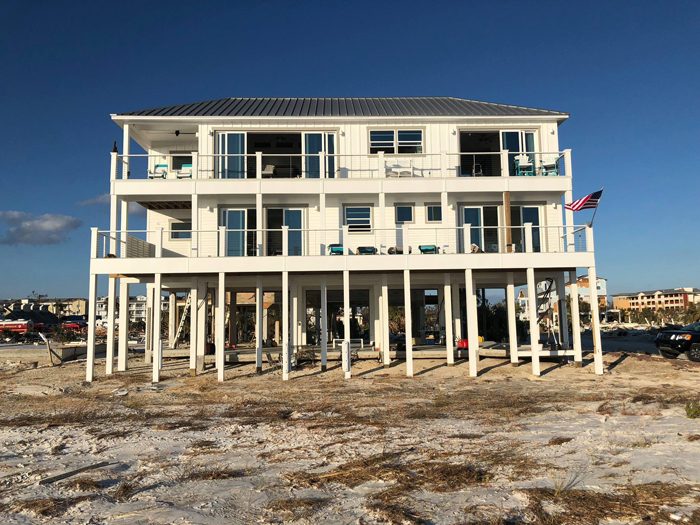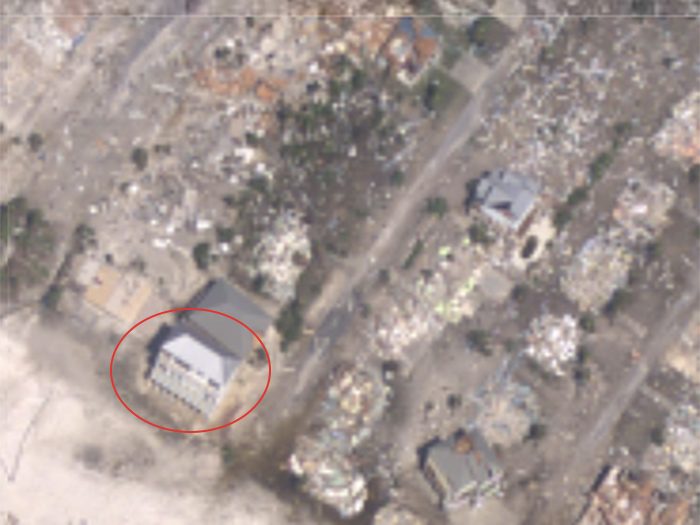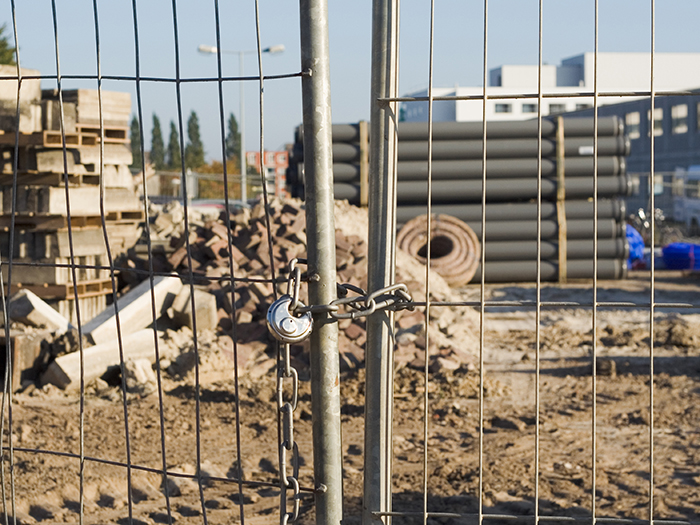This Incredible Picture Proves That Resiliency Is the Answer

In the aftermath of Hurricane Michael, the terrain of Florida’s Panhandle looks like a combat zone. The structures that remain are scattered awkwardly, embattled survivors with varying degrees of damage.
But on one block in Mexico Beach, the last surviving beachfront house is attracting media buzz for its remarkable lack of damage. Looking at it, you might assume that Category 4 hurricane missed it entirely. Except that, of course, it didn’t.
The house, dubbed the Sand Palace by its owners, was battered just as badly as its neighboring structures now turned to rubble. But owners Russell King and Lebron Lackey, King’s nephew, built the structure deliberately to withstand the elevated intensity of recent hurricane seasons with meticulous attention to detail and design.
“People are talking about this as the miracle house. It’s not a miracle. Miracles are unexplained, extraordinary events. This one is quite easily explained. It’s a brilliant feat of engineering,” said Katherine Klosowski, vice president and manager, special projects, FM Global.
The five-bedroom, five-bathroom house, built on 40-foot pilings buried deep in the ground, is constructed of reinforced concrete. The space under the roof was minimized to reduce the risk of wind surging underneath and lifting it off.
A stairway providing access to the house is gone, as is the siding that wrapped around it. But that wasn’t a design failure — in fact it was the opposite. Breakaway walls were built intentionally to tear free without strain on or damage to the main structure.
The Sand Palace was built to standards far exceeding Florida’s building codes. State codes are strict when it comes to windstorm resistance for structures built along the Atlantic shoreline, but it is less so for those along the Panhandle, where full building codes applied only to a one-mile strip along the coast, leaving houses built during that period further inland vulnerable.
“People are talking about this as the miracle house. It’s not a miracle. Miracles are unexplained, extraordinary events. This one is quite easily explained. It’s a brilliant feat of engineering.” — Katherine Klosowski, vice president and manager, special projects, FM Global
In the coastal Panhandle counties affected by Michael, buildings are required to be able to withstand wind speeds of 120 to 150 miles an hour. But the owners of the Sand Palace wanted better odds of survival. They built the their home to withstand 250 mile-an-hour winds.
“In most areas there will be a local code, which is a minimum building code, but if you want to design for resilience, quite often you need to design above that minimum code,” said Klosowski.
She also noted that resilience will have different meanings depending upon the mission of the organization inhabiting a structure, which means it may be necessary to follow standards that go far beyond maintaining structural integrity.
A hospital is going to need to stay open during a hurricane or during a flood, whereas a bus owner is going to want to get into their facility a day after that event passes.
“There are ways that the building can be designed to sustain that — it’s a matter of intent.”
The Cost of Resilience
Information on the cost of resilience enhancements for the Sand Palace is hazy. One of its owners reported to CNN that costs were increased by 15 percent, which falls in line with reports suggesting that property owners should expect to pay 10 to 15 percent more to protect their structures. But it could cost as little as 3 percent to 5 percent more in some areas of the country.
There is evidence that resilience is an achievable — and affordable — goal, even for more modest structures than the Sand Palace.
Five recently built houses in the Panhandle region constructed by Habitat for Humanity fared well during Michael. They were built with hurricane ties, thicker lumber, windstorm plywood and metal roofs. Between the five, they lost some siding, one AC unit and one window.
The Habitat for Humanity houses were built to a standard called “Fortified Gold,” developed by the Insurance Institute for Business & Home Safety (IBHS), a nonprofit, independent research organization.
IBHS’s standard puts a heavy emphasis of roof fortification, which is a key factor in any structure’s ability to withstand natural disasters. Special nails and hurricane clips/ties that tighten the roof to wall connection are a vital piece of the puzzle.
“One of the most common things that happens during a windstorm, as high winds pull across a building, is it pulls off the roof,” said Klosowski. “If you pull off the roof of a building, you lose the structural integrity of that building. The walls are no longer as stable and obviously you’re opening it up for all of the elements and the falling rain to come in. So if you can keep the roof on a building then you’re going to significantly reduce the amount of damage.”
The biggest takeaway from the survival story of the Sand Palace is that the potential for true resilience is no lofty ideal; it’s a tangible, achievable reality. But the takeaway from the mass devastation that surrounds it is that there is a long way to go before resilience becomes the rule rather than the exception.
“The world needs to recognize that its not inevitable that this type of damage has to happen,” said Klosowski. “There are ways that it can be engineered out and it’s a matter of having the intent to do it.” &












